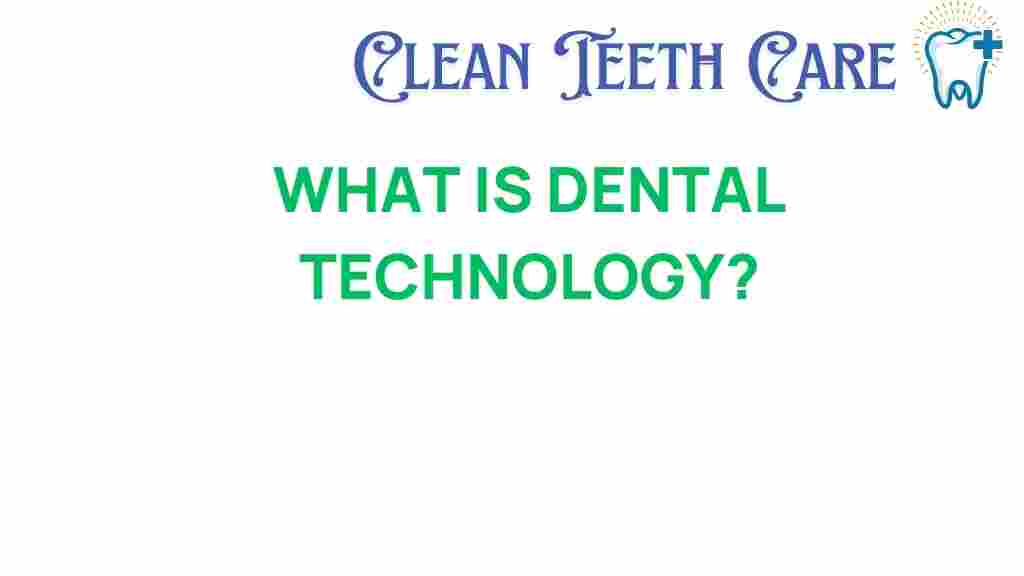Unveiling Dental Technology: The Future of Oral Care
In today’s fast-paced world, advancements in dental technology are revolutionizing the way we approach oral health. Innovative tools and techniques are enhancing the field of dentistry, making treatments more efficient, effective, and patient-friendly. This article explores the latest innovations in dental technology, focusing on how these advancements improve patient care, preventive measures, and overall treatment experiences.
The Rise of Digital Tools in Dentistry
The integration of digital tools into dentistry has transformed traditional practices. Digital impressions, for instance, replace the uncomfortable molds of the past, allowing for a more accurate and comfortable experience for patients. Some key technologies include:
- CAD/CAM Systems: Computer-aided design and computer-aided manufacturing systems streamline the creation of dental restorations, such as crowns and bridges, in a single visit.
- 3D Printing: This technology enables the production of dental models, surgical guides, and even prosthetics with precision and speed.
- Intraoral Scanners: These devices capture detailed images of the mouth, improving diagnosis and treatment planning without the mess of traditional impressions.
Innovations in Preventive Measures
Preventive care is crucial for maintaining oral health. Recent advancements have made it easier to detect issues before they escalate. Some notable innovations include:
- Salivary Diagnostics: Testing saliva can provide insights into a patient’s oral health, helping identify risks for conditions like cavities and gum disease.
- AI-Powered Tools: Artificial intelligence is now being used to analyze X-rays and scans, detecting early signs of dental issues that may go unnoticed by the human eye.
- Smart Toothbrushes: These devices offer real-time feedback on brushing techniques and overall oral hygiene, encouraging better habits.
Advancements in Treatment Options
As we delve deeper into dental technology, the treatment options available to patients have expanded significantly. Some advancements making waves in treatment include:
- Laser Dentistry: Lasers offer a less invasive option for various procedures, including cavity treatment and gum reshaping, often resulting in reduced discomfort and quicker recovery times.
- Teledentistry: Virtual consultations have become a game-changer, allowing patients to receive care from the comfort of their homes.
- Biomaterials: Innovations in materials used for fillings and restorations are enhancing durability and aesthetics, leading to longer-lasting solutions.
Enhancing Patient Care Through Technology
Modern dental technology goes beyond just treatment; it enhances the overall patient experience. Here are ways technology improves patient care:
- Patient Portals: Secure online platforms allow patients to access their records, schedule appointments, and communicate with their dental team easily.
- Augmented Reality (AR): Some practices use AR to educate patients about procedures, making it easier for them to understand their treatment.
- Automated Appointment Reminders: Digital reminders help reduce no-show rates and keep patients engaged with their oral health.
Step-by-Step Process of Implementing New Technology in a Dental Practice
For dental practices looking to integrate new innovations, a systematic approach is essential. Here’s a step-by-step process:
- Assessment of Needs: Evaluate the specific needs of your practice and patients to identify which technologies could be beneficial.
- Research Options: Investigate different technologies, reading reviews and case studies to understand their effectiveness.
- Budgeting: Determine the financial implications of acquiring and implementing new technologies.
- Training Staff: Ensure that all team members are adequately trained to use new tools and understand their benefits.
- Implementation: Gradually implement the technology, starting with a pilot phase to gather feedback.
- Evaluate Outcomes: After implementation, regularly assess the technology’s impact on patient care and treatment outcomes.
Troubleshooting Common Issues with Dental Technology
While dental technology can greatly enhance practice efficiency, challenges may arise. Here are some common issues and their troubleshooting tips:
- Software Glitches: Regularly update software and ensure proper IT support is available to address any technical issues.
- Patient Resistance: Educate patients about the benefits of new technologies, emphasizing how they improve their care.
- Integration with Existing Systems: Choose technologies that are compatible with current systems to avoid disruption in workflow.
The Role of Dental Professionals in Embracing Technology
As dentistry evolves, the role of dental professionals is also changing. Here’s how dental teams can embrace technology:
- Continuous Education: Stay updated on the latest advancements through workshops, webinars, and courses.
- Feedback Mechanisms: Encourage patient feedback on new technologies to improve their experience.
- Collaborate with Tech Companies: Work with technology providers to tailor solutions that fit specific practice needs.
Conclusion: The Future of Dental Technology and Oral Health
As we look to the future, it is clear that dental technology will continue to play a pivotal role in shaping the landscape of oral health. From innovative treatments to enhanced patient care, the advancements in dentistry promise a brighter future for both dental professionals and patients alike. Embracing these changes not only improves the efficiency of dental practices but also elevates the standard of care that patients receive.
For further reading on the latest in dental technology, visit this resource for insights and updates. To learn more about maintaining your oral health, check out our guide on effective preventive measures.
This article is in the category Treatments and created by CleanTeethCare Team
